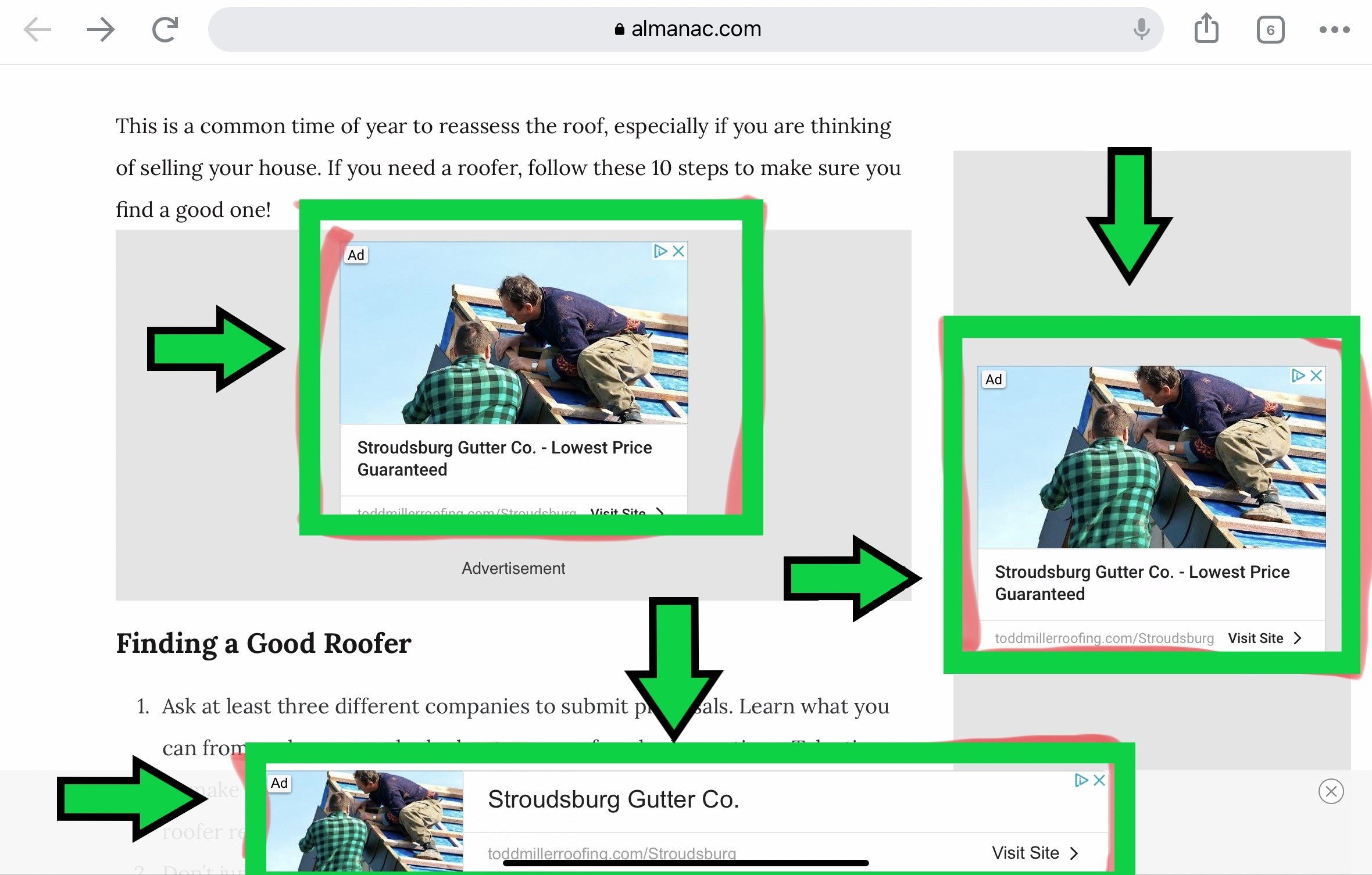Contextual Advertising
targeting your customers when they need you most
Have you ever noticed just how many blogs and websites have display ads?
I’m sure you have, but you may not have noticed that sometimes the ads are for products and services related to the content on the page you're visiting and sometimes it’s not.
Why does that matter to you Mr./Mrs. Small Business Owner?
This example above, in the red box is an ad that’s completely unrelated to the content on the page we’re seeing. While it’s possible that the person checking out cooking recipes is also interested in learning more about Waze (satellite navigation), it’s not likely. This is a behavioral ad. The person seeing this ad likely clicked something similar recently where their information was collected on their browser by a cookie, so now they’re seeing similar ads across many of the websites they visit. This is an intrusive form of marketing and it’s falling out of favor because of the greater awareness of privacy issues.
On the page above for “How to Make Pressure Cooker Chicken Spaghetti”, the ad in the green box is for quinoa. A starchy food that spaghetti lovers might also like. This is what’s called a contextual ad.
The benefit of contextual ads is that unlike behavioral ads, these are much more relevant to what visitors are actually looking for. These ads don’t follow you around from page to page causing a privacy concern and turning people off to your brand. Instead, the ad follows the content around and only shows up when people visit that content.
Here’s another example of contextual ads that are relevant to what’s on the page. In the green boxes you can see ads for renewable energy installation and finding a realtor. While not everyone that visits this page on “How to find a reliable home contractor”, will also be in the market for renewable energy or finding a realtor, undoubtedly some will be. That’s the huge benefit of contextual advertising. It’s helpful, not intrusive.
This strategy is not just for big companies with huge budgets, when you add geo-targeting it works great for local businesses as well.
I set the location on my computer to L.A., then I did a search for “Do it yourself plumbing” and what came up in my search results was this article on a very high traffic website with helpful advice, along with an ad to a local plumber in case I get really frustrated with the process and just want to call a professional.
When I clicked the ad in the article above, the link took me to this page for California Pumping & Sanitation, Inc. From the looks of it, this does not appear to be a massive plumbing conglomerate with a huge marketing budget. Seems more like local pros, just getting their name out there.
It doesn’t take an advanced marketing degree to see that if you’re a plumber in and around LA, this is exactly where you want to see your ad.
With my location still set for Los Angeles, I checked out another article related to plumbing on this high traffic site and as you can see above, it links to another local plumber.
Again, this website does not appear to belong to a billion dollar plumbing conglomerate with a huge marketing budget, does it?
Ok, but what if I’m not in LA? And what if I’m not a plumber?
I tried the experiment again, but this time instead of looking for a plumber on the west coast, I set out to find a roofer in central PA and a funny thing happened.
Came across this site again because it’s obviously a high traffic website.
Then I came across this other site that’s much smaller and gets far less traffic, and of course I found another contextual ad.
Then I clicked the ads and I realized that the one in the Wikihow article “How to Choose a Residential Roofing Contractor” and the ad on the Almanac website “How to Find a Good Roofer” both went to the same website for Todd Miller Roofing, Siding, and Seamless Gutters, based in Easton, PA.
That means that if someone is looking for info on roof repair in or around Easton, they’ve got a pretty good chance of coming across Mr. Miller here.
How much does it cost?
And the best part, you can run contextual ads across high traffic, high relevancy pages for as little as $1 a day and $.25 - $2 per click, if they actually engage with the ad and visit your website.
Curious about contextual advertising and how you can help get your business in front of more people actively looking for what you offer?
Let’s talk!












